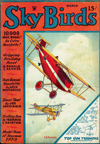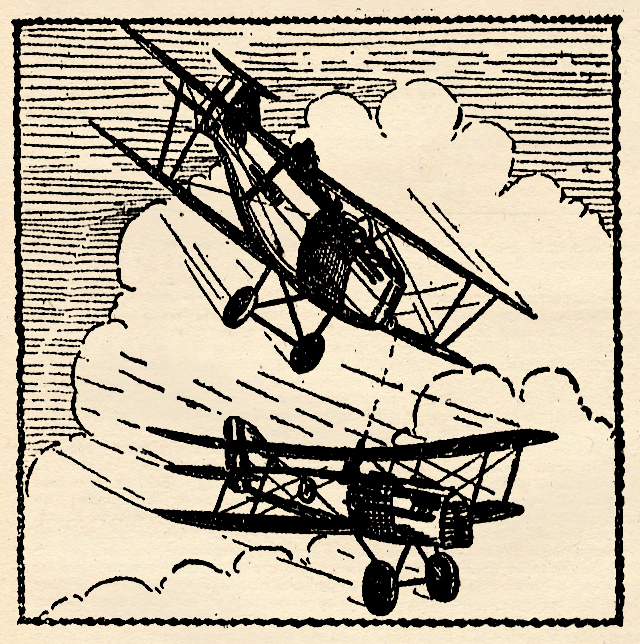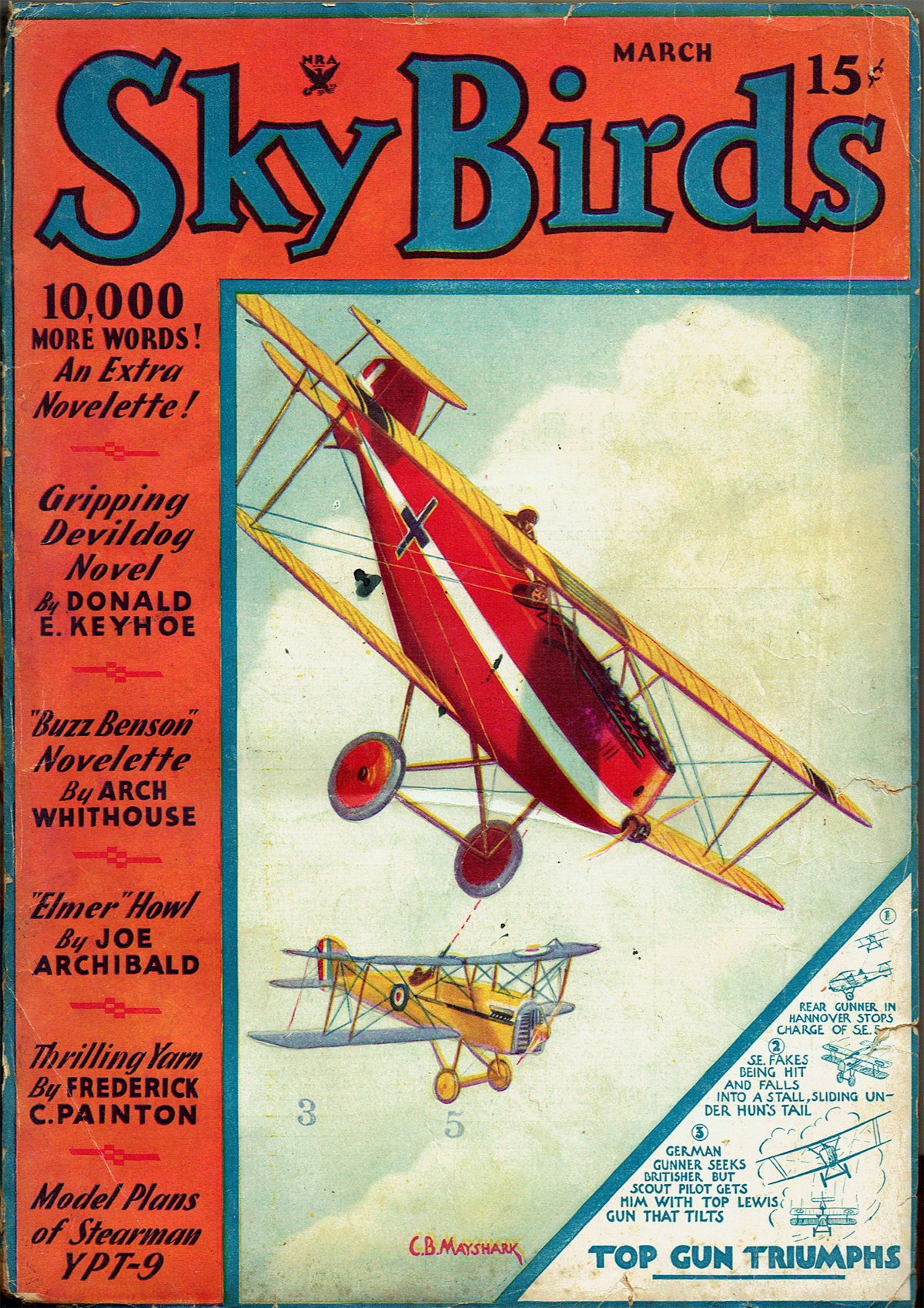“Sky Birds, March 1935″ by C.B. Mayshark
THIS May we’re celebrating the genius that is C.B. Mayshark! Mayshark took over the covers duties for Sky Birds with the July 1934 and would paint all the remaining covers until it’s last issue in December 1935. At the start of his run, Sky Birds started featuring a different combat maneuver of the war-time pilots. The lower corner presenting a play-by-play of that month’s maneuver with the remainder of the cover illustrating it. For March 1935 issue Mayshark gives us “Top Gun Triumphs!”
Combat Maneuvers of War-Time Pilots:
Top Gun Triumphs
A BRITISH S.E.5 is on reconnaissance  duty high above the shell-torn contours of the Rhine. As it skims along on the dead air, its pilot is suddenly struck with a feeling of loneliness. Even the sun, which is covered with a thick, murky haze, affords no companionship.
duty high above the shell-torn contours of the Rhine. As it skims along on the dead air, its pilot is suddenly struck with a feeling of loneliness. Even the sun, which is covered with a thick, murky haze, affords no companionship.
With his observations well in mind, the British pilot banks his ship around and heads for home, thinking that maybe this war flying is not such hot stuff, after all, especially when even the sun isn’t friendly. But suddenly the sun is a great deal less than friendly. A German Hannover drops from out of its glittering depths with a screech and a thunderous roar, and the S.E.5 finds its wings being splintered with Spandau tracer.
In panicky excitement, the British pilot sends his ship up into a steep climb and veers off in a mad effort to shake off the German. As he finds himself momentarily clear of the murderous machine-gun fire, the Britisher feels like a rat without a hole into which to crawl. With both ships out of firing range of each other, the S.E. pilot has time to think, and he grimly determines that he will not go down without firing a shot.

However, extreme difficulties must be overcome in order to down a German Hannover two-seater. This ship is noted for its practical immunity to single-ship attack, and its only blind spot is hard to get at. With a rear gunner who controls a wide arc of fire, it is almost impossible for one to dive upon the ship—that is, if life is to be considered. Attack from the rear is also hazardous because of the specially constructed tail assembly. With the lifting and elevator surfaces built in biplane form, the lateral dimensions are greatly reduced, thereby providing for a much greater arc of fire on either side of the fuselage than on ships of conventional style.
Also, the narrow fuselage enables the gunner to fire down at a very steep angle. Of course, the pilot’s guns firing through the propeller cover anything ahead which is in the ship’s line of flight. The Hannover is fast and maneuvers easily. All in all, it is a ship with a very high efficiency rating.
Knowing all these facts, the S.E. pilot plans his attack shrewdly. Waiting for a moment while the Hun plane comes upon him again, the Britisher continues flying in a straight line. The instant the German opens fire, our pilot fakes being hit and stalls, nose-up. As the S.E. falls away in a flutter to the rear of the Hannover, the Hun gunner, with a yell of triumph, smacks his pilot on the back. But his rejoicing is short-lived, for suddenly the S.E. comes to life. It gathers speed like a streak and is below the German in an instant. The Britisher handles the Lewis gun mounted on the top plane with cool precision, and as he pulls the handle down, he fires up almost vertically. A few short bursts are enough, and then the S.E. ducks out while the ducking is good. A moment later, the German two-seater careens crazily and then dives for earth in a mad spin. The British have won again!
The S.E.5 (S.E. meaning Scouting Experimental) was one of the best single-seaters in the Allied service during the war. It was designed by the engineers of the Royal Aircraft Establishment, and numbers of them were built by several different airplane manufacturers in England.

Sky Birds, March 1935 by C.B. Mayshark
(Combat Maneuvers of War-Time Pilots: The Story Behind This Month’s Cover)




